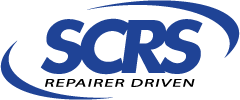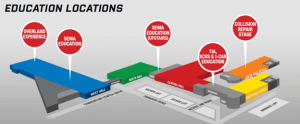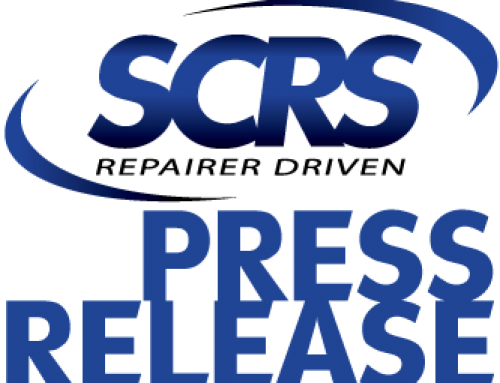
Mechanicsville, Virginia, October 4, 2022 – The Society of Collision Repair Specialists (SCRS) is announcing details for all three sessions being offered as part of the 2022 OEM Collision Repair Technology Summit (Summit), taking place on Thursday, November 3 during the SEMA Show.
Held at the Las Vegas Convention Center, Upper South Hall (Room S233), the Summit’s three sessions feature distinctly different discussions highlighting how trends and technological developments in modern vehicles influence vehicle repairability and collision industry preparation.
Register for sessions individually (click here), or as part of the Full Series Pass (click here).
The Full Series Pass provides the greatest flexibility and value, giving access to one regular Repairer Driven Education session in each available time slot, all three OEM Summit sessions, the IDEAS Collide Showcase, plus one (1) ticket to the SCRS Sky Villa After-party on Thursday night.
The Summit agenda Includes:
SESSION I: 9:00 – 10:30
OEM Repair Procedure Accessibility
The foundation of a quality repair begins with access and adherence to documented repair procedures from the vehicle manufacturer. When followed, everyone in the process succeeds in establishing mutual accountability to protect consumers on America’s roadways.
Consumers should be able to assume their vehicle repairs will be performed in accordance with the documented procedures, detailed by the vehicle engineers. They should have the ability to choose an independent repair business that has invested in the facility, equipment, and skillset development to meet the rigorous demands of these increasingly sophisticated, modern vehicles.
But in the collision repair market, well-trained, well-equipped repair facilities are not struggling to gain access to collision repair procedures – they are struggling to compete against other businesses who don’t prioritize access and adherence to the available information.
In this presentation and panel, automakers will discuss access points for information, means to utilize the procedures in a repair environment, and ways to overcome myths or perceived obstacles in accessing and utilizing repair procedure data.
- Featuring:
Mark Allen, Collision Programs Manager at Audi of America
Benito Cid, Collision Business Development Manager at Mercedes-Benz USA
Kevin Earlywine, Instructor – Collision Repair & Refinish at Toyota Motor North America
Wayne Weikel, Senior Director, Alliance for Automotive Innovation
Amber Alley, Manager at Barsotti’s Body & Fender
And moderated by,
Aaron Schulenburg, Executive Director at the Society of Collision Repair Specialists
Repair procedures and vehicle data already exist, and the industry and consumer benefit most when they are accessed and followed.
SESSION II: 11:00 – 12:30
Tackling the Technician Crisis Together
Technicians play one of the most critical roles in proper repairs, and the increasing shortage of talent is a contributing factor with implications on the collision repair businesses.
This session, led by Eliza Johnson of Ducker Carlisle, explores data compiled by the global market research firm that delves into the technician crisis, as well as solutions, in partnership with automakers to bolster the technician pool. The presentation will elaborate on the severity of the technician crisis in the automotive landscape, and how it is expected to evolve over the coming years, while considering technology advancements and demographic expectations.
For several years now, Carlisle has been committed to exploring solutions to address the technician shortage, specifically looking at what dealers should be doing to get new technicians in the door, to keep them in their facilities and retain them in the industry for the long-term. Eliza Johnson will elaborate on tactical examples of the Carlisle recommendations in key areas and how the research and recommendations led to the formation of the Automotive Technician Collaboration (ATC), a Carlisle-led group of nine automotive OEMs jointly tackling an industry response to the technician crisis. The collective goal is to change the perception of the automotive technician career. This is both in the eyes of the public to grow the pool of new prospective technicians entering dealerships as well as in the eyes of existing technicians, to keep them in their roles for the long haul.
Following the presentation, Johnson will then welcome a guest panel to join the conversation, seeking to explore the relationship between findings in the OEM technician space, and the carryover in how the collision industry can benefit from these learnings and build the framework for action plans to combat these pressing challenges. Panelists will provide valuable perspectives to address collision-specific activities and the correlation between budding industry activity with a shared emphasis on the growth of technical assets in the industry.
- Panel featuring:
Dara Goroff, Vice President, Planning & Industry Talent Programming at I-CAR
John Helterbrand, National Program Director at Collision Engineering
Jennifer Maher, Executive Director at the TechForce Foundation
SESSION III: 1:00 – 2:30
Managing Scan Tool Choices While Ensuring Safe and Proper Repairs
When it comes to scanning, some of the most common questions asked in the industry include:
Why do the OEMs require the use of their factory tool when servicing safety systems?
Is there a difference between the factory tool and an aftermarket tool?
These questions result in spirited discussions and often assumptions that can create challenges in the repair and claims settlement process for consumers, technicians, shop owners, OEMs, and carriers alike. In this session, Chris Chesney, VP Training & Organizational Development at Repairify will present to the industry the results of a detailed research project completed by the company. The field study connected multiple aftermarket tools to thousands of YMMT vehicles and compiled a comparative analysis of the scan results, Diagnostic Trouble Codes (DTCs) and the ability to clear DTCs in the same manner as the factory tool. Chesney will provide insight into how the resulting database can identify when, and if, an aftermarket tool can offer the same results as an OEM tool. The OEM Summit will be the first public visibility into the results of testing thousands of vehicles using both OEM and aftermarket tools.
Following the presentation of data, Chesney will welcome automakers to the stage to discuss how the results of their tests align with automaker guidance and requirements, and challenges faced by repairers in adherence to those repair instructions.
- Panel will include:
Dan Dent, Manager, Collision, Certified Repair Network at Nissan Motor Corporation
Devin Wilcox, Program Manager and Strategist, Collision Network at Subaru of America
Jake Rodenroth, North American Body Repair Program Operations Manager at Lucid Motors
Register for sessions individually, or as part of the Full Series Pass.
Tickets can be secured onsite, outside the education classrooms (rooms S229 – S233) in the Upper Level of the South Hall of the Las Vegas Convention Center.
The 2022 OEM Collision Repair Technology Summit is made possible with support from AirPro Diagnostics, BASF, CAR-O-LINER, CCC, Enterprise, Reliable Automotive Equipment, Toyota and SEMA.
To learn more about SCRS’ education series at the SEMA Show visit https://scrs.com/sema-rde-registration.
For more information about SCRS, or to join as a member, please visit www.scrs.com, call 1-877-841-0660 or email info@scrs.com.
About SCRS: Through its direct members and 37 affiliate associations, SCRS is comprised of 6,000 collision repair businesses and 58,500 specialized professionals who work with consumers and insurance companies to repair collision-damaged vehicles. Additional information about SCRS including other news releases is available at the SCRS Web site: www.scrs.com. You can e-mail SCRS at the following address: info@scrs.com.
















